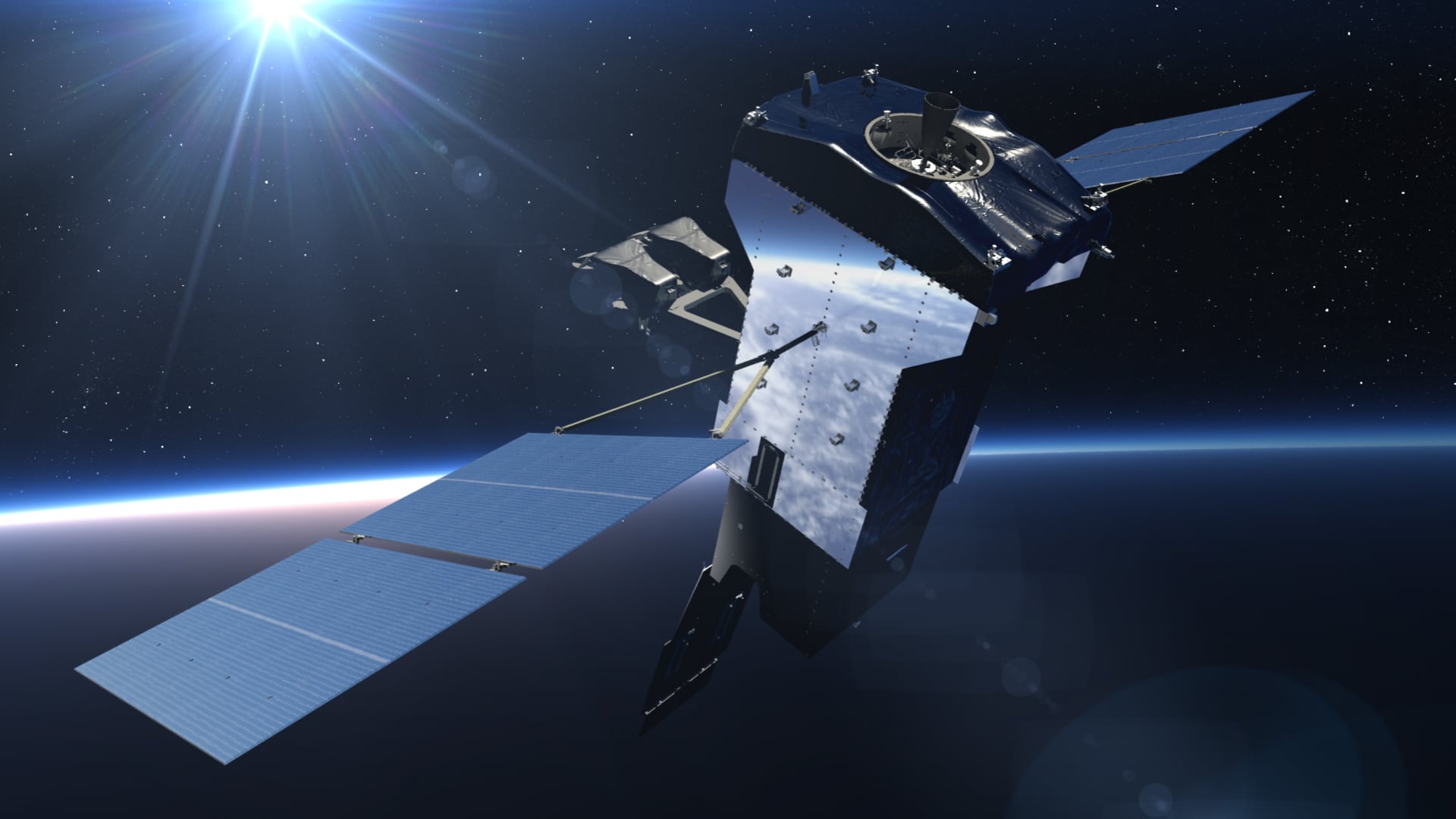WASHINGTON — The fifth geosynchronous satellite in the Space Based Infrared System constellation was recently delivered to Florida ahead of its anticipated May launch date.
SBIRS is the nation’s premier missile warning satellite, providing 24/7 coverage to detect missile launches all over the world. Notably, the U.S. Space Force credits the system with saving lives by providing a critical warning to seek cover after Iran launched more than a dozen ballistic missiles at U.S. and allied forces in Iraq in January 2020.
SBIRS comprises four satellites in geosynchronous orbit with another two hosted payloads in highly elliptical orbits. The GEO satellites have two sensors — a scanner that continuously monitors the Earth and a step-starer that can provide more accurate coverage for theater missions — while the hosted payloads just have the scanner.
In 2014, the U.S. Air Force awarded $1.86 billion to build the fifth and sixth GEO satellites to replace the first two. In 2018, Congress determined that GEO-5 and GEO-6 would be the final satellites in the SBIRS constellation, opting to fund a successor program called Next Generation Overhead Persistent Infrared instead.
SBIRS GEO-5 was completed in October and delivered March 18 to Florida for launch.
“This delivery represents a major milestone for the SBIRS program and is a critical step towards putting GEO-5 on orbit for the warfighter. It represents the hard work and dedication of the combined team of Lockheed Martin, Northrop Grumman, the Aerospace Corporation, multiple support contractors and government personnel,” said SBIRS GEO-5/6 production material leader Lt. Col. Ryan Laughton in a statement.
According to the Space and Missile Systems Center, the satellite was transported from the Lockheed Martin Space Systems Center in Sunnyvale, California, to Cape Canaveral Space Force Station in Florida on one of the company’s C-5M Super Galaxy transport aircraft. The satellite will now go through final ground testing of its integrity followed by fueling. Then the payload will be encapsulated and integrated with the launch vehicle.
This is the first military satellite to be built on Lockheed Martin’s new LM 2100 combat bus. The company said the upgraded bus is built for improved resiliency, cyber-hardening, power and propulsion, while it’s flexible design and common components streamline manufacturing.
SBIRS GEO-6 will also utilize the new bus, as will the GPS III Follow-On satellites and the three Next Gen OPIR satellites the company is building for the Space Force.
SBIRS GEO-5 is slated for a May 17 launch aboard a United Launch Alliance Atlas V rocket.
Nathan Strout covers space, unmanned and intelligence systems for C4ISRNET.








